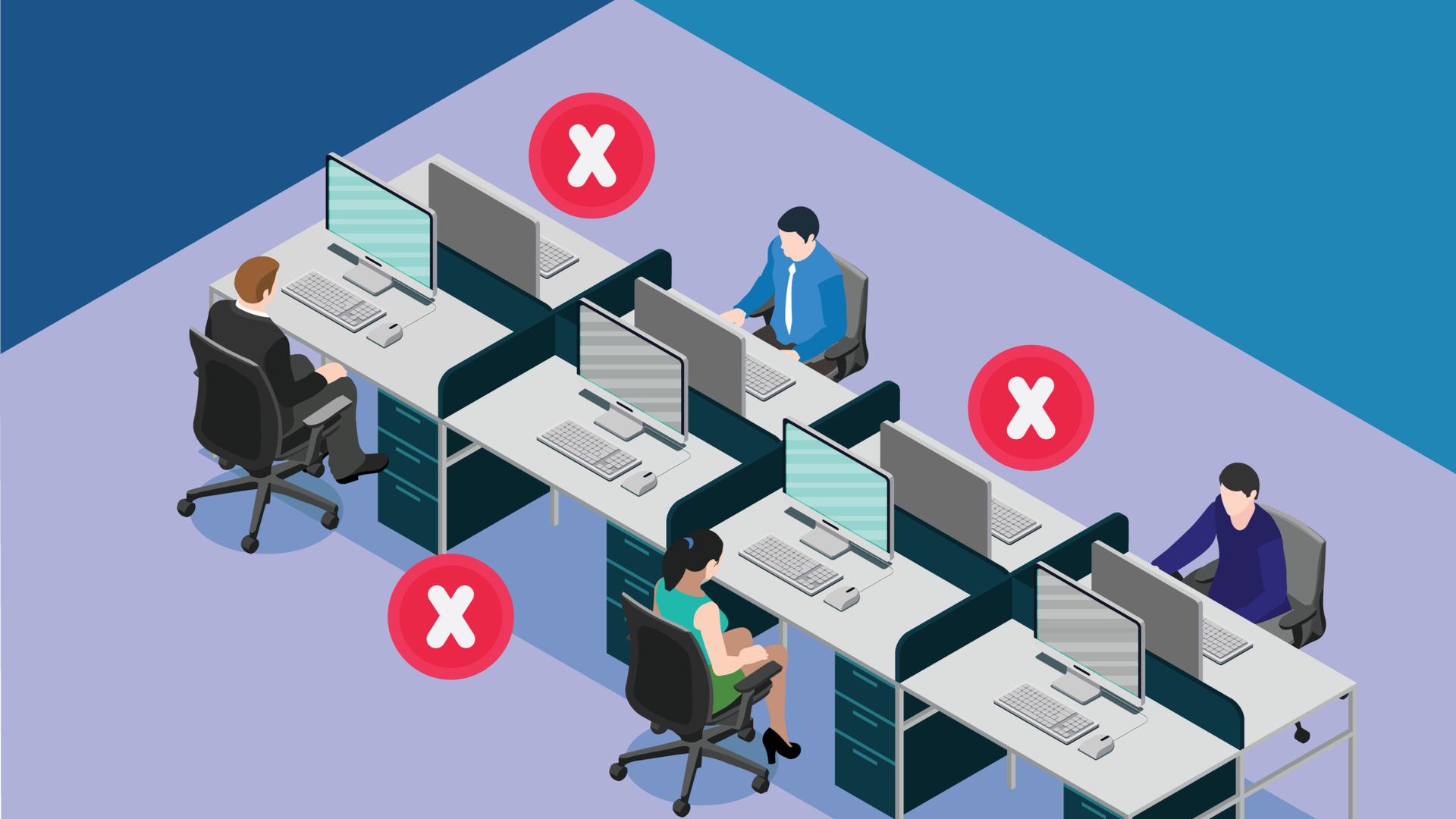Cisco unveils tools to service the post-coronavirus workplace
New tech, and updates to Webex, aim to help businesses cope with social distancing and remote employee engagement


Cisco has unveiled a ‘business resiliency’ portfolio that offers enterprises the tools to cope with the realities of a post-COVID business landscape, including remote working technologies and workplace systems.
The portfolio combines industry-specific as well as general-purposes services to give customers the means to cope with the new reality of social distancing in the workplace and difficulties in engaging remote workers.
Cisco is rolling out the portfolio as the effects of COVID-19 continue to take their toll, and challenges such as mass remote working and fragmented IT continue to loom. This is in addition to further updates to WebEx, Cisco’s video conferencing platform, and integration with collaboration platform WebEx Teams and Box.
Industry-specific tools released as part of the business resilience package including a remote learning system, as well as an IT infrastructure kit to allow governments to establish a temporary hospital, in the mould of the NHS Nightingale sites. The temporary connected field hospital, as it’s dubbed, includes wireless networking and the associated technology to establish a temporary facility within five days.
“Over the past several months we’ve seen major disruption to many industries and organizations at a pace like never before. Businesses that once mapped digital strategy in one to three-year periods have been required to scale their initiatives essentially overnight,” said Cisco CEO Chuck Robbins.
“Cisco’s new business resiliency portfolio will help customers reevaluate their business strategies and implement solutions more quickly and easily than ever before.”
The remote workforce systems include a remote contact centre system, enabling contact centre agents to work from home using cloud-based systems or the capabilities to securely access their on-premise tech remotely.
Sign up today and you will receive a free copy of our Future Focus 2025 report - the leading guidance on AI, cybersecurity and other IT challenges as per 700+ senior executives
Flexible remote access gives employees the expertise and tools to access the network, endpoints and applications remotely, while the final prong, secure remote worker, offers businesses tools to analyse the effectiveness and security of their VPNs.
Among the workplace technologies being rolled out is remote office connectivity that extends a corporate network to adjacent and remote locations so workers can benefit from increased bandwidth and faster connectivity.
Finally, social density monitoring and insights gives workplaces a view on how busy their workplace environments might be at any one time. This is in order for facilities teams to plan return-to-work strategies with social distancing in mind.
The WebEx integration with Box, meanwhile, allows workers to use the content management platform’s secure file-sharing capabilities to share documents with colleagues. With regards to WebEx, Cisco has tripled the video conferencing platform's capacity in light of the surge in users as a result of the pandemic.
WebEx will also introduce a fully-fledge voice-activated virtual assistant, building on Cisco's intentions to use voice tools to explore the 'next frontier' of data insights, outlined in January this year.

Keumars Afifi-Sabet is a writer and editor that specialises in public sector, cyber security, and cloud computing. He first joined ITPro as a staff writer in April 2018 and eventually became its Features Editor. Although a regular contributor to other tech sites in the past, these days you will find Keumars on LiveScience, where he runs its Technology section.
-
 I couldn’t escape the iPhone 17 Pro this year – and it’s about time we redefined business phones
I couldn’t escape the iPhone 17 Pro this year – and it’s about time we redefined business phonesOpinion ITPro is back on smartphone reviews, as they grow more and more intertwined with our work-life balance
-
 When everything connects, everything’s at risk
When everything connects, everything’s at riskIndustry Insights Growing IoT complexity demands dynamic, automated security for visibility, compliance, and resilience
-
 Infosys co-founder Narayana Murthy called for a 70 hour week last year — now he says that’s not enough
Infosys co-founder Narayana Murthy called for a 70 hour week last year — now he says that’s not enoughNews Murthy thinks longer hours akin to China’s '996' approach are the key to success
-
 Microsoft could be preparing for a crackdown on remote work
Microsoft could be preparing for a crackdown on remote workNews The tech giant is the latest to implement stricter policies around hybrid working without requiring a full five days in the office
-
 IT professionals aren’t budging on flexible work demands – and more than half say they’ll quit if employers don’t meet expectations
IT professionals aren’t budging on flexible work demands – and more than half say they’ll quit if employers don’t meet expectationsNews Analysis from Randstad shows 40% of UK-based IT pros have quit over a lack of flexible work options, while 31% of workers globally have done the same.
-
 'The tide seems to be turning towards office attendance': 64% of hybrid business leaders want staff back in the office – but many worry that enforcing RTO mandates will drive employees away
'The tide seems to be turning towards office attendance': 64% of hybrid business leaders want staff back in the office – but many worry that enforcing RTO mandates will drive employees awayAnalysis Many UK business leaders want their staff back in the office more frequently, but they’re scared to implement return to office (RTO) mandates in fear of worker revolts.
-
 Employees are dead set on flexible working arrangements – three quarters would turn down a role that didn't offer hybrid options as work-life balance becomes more important than pay
Employees are dead set on flexible working arrangements – three quarters would turn down a role that didn't offer hybrid options as work-life balance becomes more important than payNews New research shows workers are increasingly demanding flexible working arrangements from employers.
-
 Nearly half of tech workers are seeking new roles – declining employee benefits and reduced flexible working options have staff looking elsewhere
Nearly half of tech workers are seeking new roles – declining employee benefits and reduced flexible working options have staff looking elsewhereNews While salaries are rising for tech workers, other benefits are in decline, leading to a fall in job satisfaction
-
 Untethered: How CIOs and CISOs are paving the way for the new hybrid workforce
Untethered: How CIOs and CISOs are paving the way for the new hybrid workforceWhitepaper Effective techniques to transition from exposed legacy infrastructure to an effective zero trust strategy
-
 Unified endpoint management and security in a work-from-anywhere world
Unified endpoint management and security in a work-from-anywhere worldWhitepaper Learn how to converge endpoint management and security processes and systems to drive efficiency and reduce risk